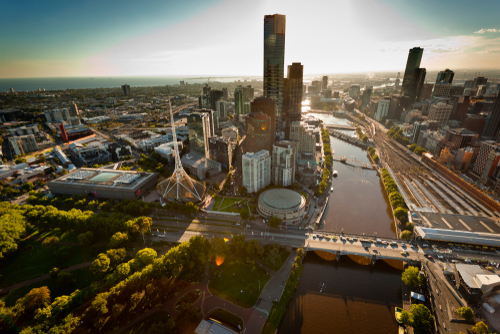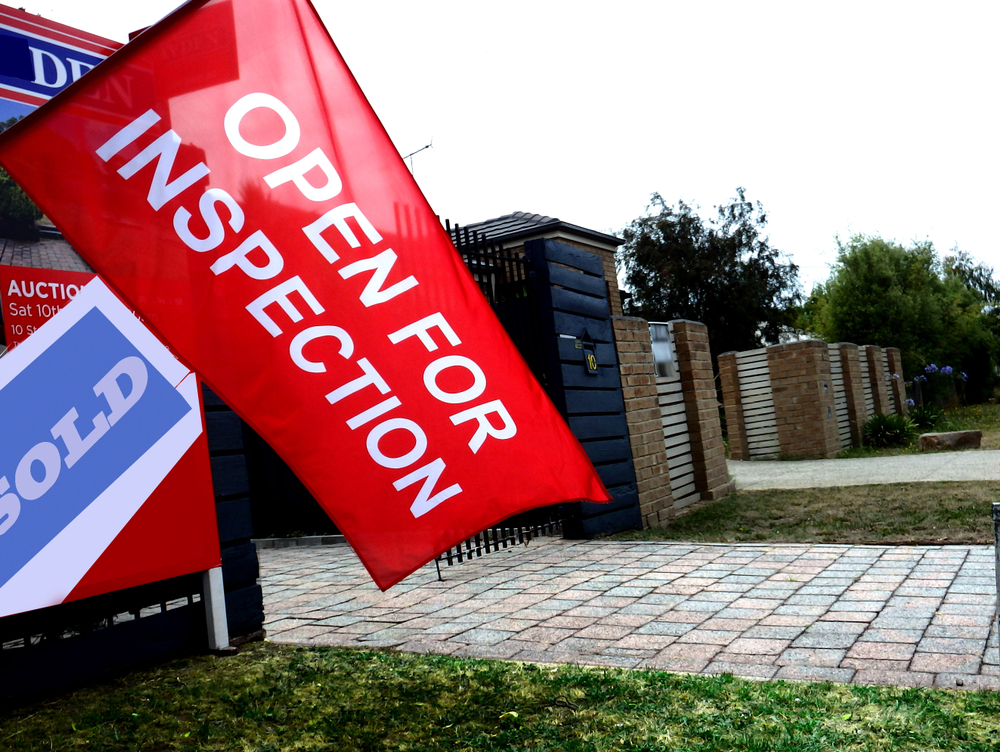Steam comes out of the market as Australian property values cool
Stubborn inflation and just-out-of-reach interest rate cuts are the likely reasons for the softer end to the year, new data has revealed
Australian capitals experienced their smallest rise in home values since January 2023, new data from CoreLogic has revealed.
The property data provider’s Home Value Index showed values rose by 0.1 percent over spring after 22 months of consecutive rises. CoreLogic predicted this could be close to the last rise in this cycle, with both the Sydney and Melbourne markets showing signs of cooling.
“The downturn is gathering momentum in Melbourne and Sydney,” said Tim Lawless, CoreLogic’s research director.“While the mid-sized capitals, which have dominated the growth cycle of late, are also losing steam.”
The trend was most obvious in Melbourne, with housing values recording drops in 10 of the past 12 months. Melbourne values fell by -1.0 percent in November, while Sydney experienced a fall of -0.5 percent. The report indicated that Sydney values had most likely peaked in August this year.
Some of the smaller capitals were also showing signs of a weakening in values, with Darwin down -0.7 percent and Canberra recording a drop of -0.3 percent.
“The mid-sized capitals and most of the regional ‘rest of state’ markets continue to provide some support for growth in the national index, but it is clear momentum is also leaving these markets,” added Mr Lawless.
However, it was a different story on the other side of the country, with Perth home values experiencing further growth. CoreLogic data showed values in the Western Australian capital up 1.1 percent over the month and 3.0 percent over the quarter. While the increases in values were the strongest amongst the capitals, CoreLogic noted that they were less than half that recorded in the June quarter, where they were at a robust 6.7 percent.
Mr Lawless pointed to a lack of movement in core inflation, as well as the diminishing likelihood of an interest rate cut early next year as factors in the subdued capital gains. Leading Australian economists are predicting a cut somewhere between February and May 2025.
“A lower cash rate will be a positive factor for housing markets,” Mr Lawless said. “Lower mortgage rates will provide a lift to borrowing capacity, and, along with lower inflation, should see an improvement in serviceability assessments and see a further rise in consumer sentiment.”
“A couple of rate cuts might be enough to shore up a declining trend in home values, but it is hard to see any material upward pressure returning until interest rates reduce more substantially and affordability barriers are less formidable.”
A divide has opened in the tech job market between those with artificial-intelligence skills and everyone else.
A 30-metre masterpiece unveiled in Monaco brings Lamborghini’s supercar drama to the high seas, powered by 7,600 horsepower and unmistakable Italian design.
Buyer demand, seller confidence and the First Home Guarantee Scheme are setting up a frantic spring, with activity likely to run through Christmas.
The spring property market is shaping up as the most active in recent memory, according to property experts Two Red Shoes.
Mortgage brokers Rebecca Jarrett-Dalton and Brett Sutton point to a potent mix of pent-up buyer demand, robust seller confidence and the First Home Guarantee Scheme as catalysts for a sustained run.
“We’re seeing an unprecedented level of activity, with high auction numbers already a clear indicator of the market’s trajectory,” said Sutton. “Last week, Sydney saw its second-highest number of auctions for the year. This kind of volume, even before the new First Home Guarantee Scheme (FHGS) changes take effect, signals a powerful market run.”
Rebecca Jarrett-Dalton added a note of caution. “While inquiries are at an all-time high, the big question is whether we will have enough stock to meet this demand. The market is incredibly hot, and this could lead to a highly competitive environment for buyers, with many homes selling for hundreds of thousands above their reserve.”
“With listings not keeping pace with buyer demand, buyers are needing to compromise faster and bid harder.”
Two Red Shoes identifies several spring trends. The First Home Guarantee Scheme is expected to unlock a wave of first-time buyers by enabling eligible purchasers to enter with deposits as low as 5 per cent. The firm notes this supports entry and reduces rent leakage, but it is a demand-side fix that risks pushing prices higher around the relevant caps.
Buyer behaviour is shifting toward flexibility. With competition intense, purchasers are prioritising what they can afford over ideal suburb or land size. Two Red Shoes expects the common first-home target price to rise to between $1 and $1.2 million over the next six months.
Affordable corridors are drawing attention. The team highlights Hawkesbury, Claremont Meadows and growth areas such as Austral, with Glenbrook in the Lower Blue Mountains posting standout results. Preliminary Sydney auction clearance rates are holding above 70 per cent despite increased listings, underscoring the depth of demand.
The heat is not without friction. Reports of gazumping have risen, including instances where contract statements were withheld while agents continued to receive offers, reflecting the pressure on buyers in fast-moving campaigns.
Rates are steady, yet some banks are quietly trimming variable and fixed products. Many borrowers are maintaining higher repayments to accelerate principal reduction. “We’re also seeing a strong trend in rent-vesting, where owner-occupiers are investing in a property with the eventual goal of moving into it,” said Jarrett-Dalton.
“This is a smart strategy for safeguarding one’s future in this competitive market, where all signs point to an exceptionally busy and action-packed season.”
Two Red Shoes expects momentum to carry through the holiday period and into the new year, with competition remaining elevated while stock lags demand.
BMW has unveiled the Neue Klasse in Munich, marking its biggest investment to date and a new era of electrification, digitalisation and sustainable design.
A bold new era for Australian luxury: MAISON de SABRÉ launches The Palais, a flagship handbag eight years in the making.




















